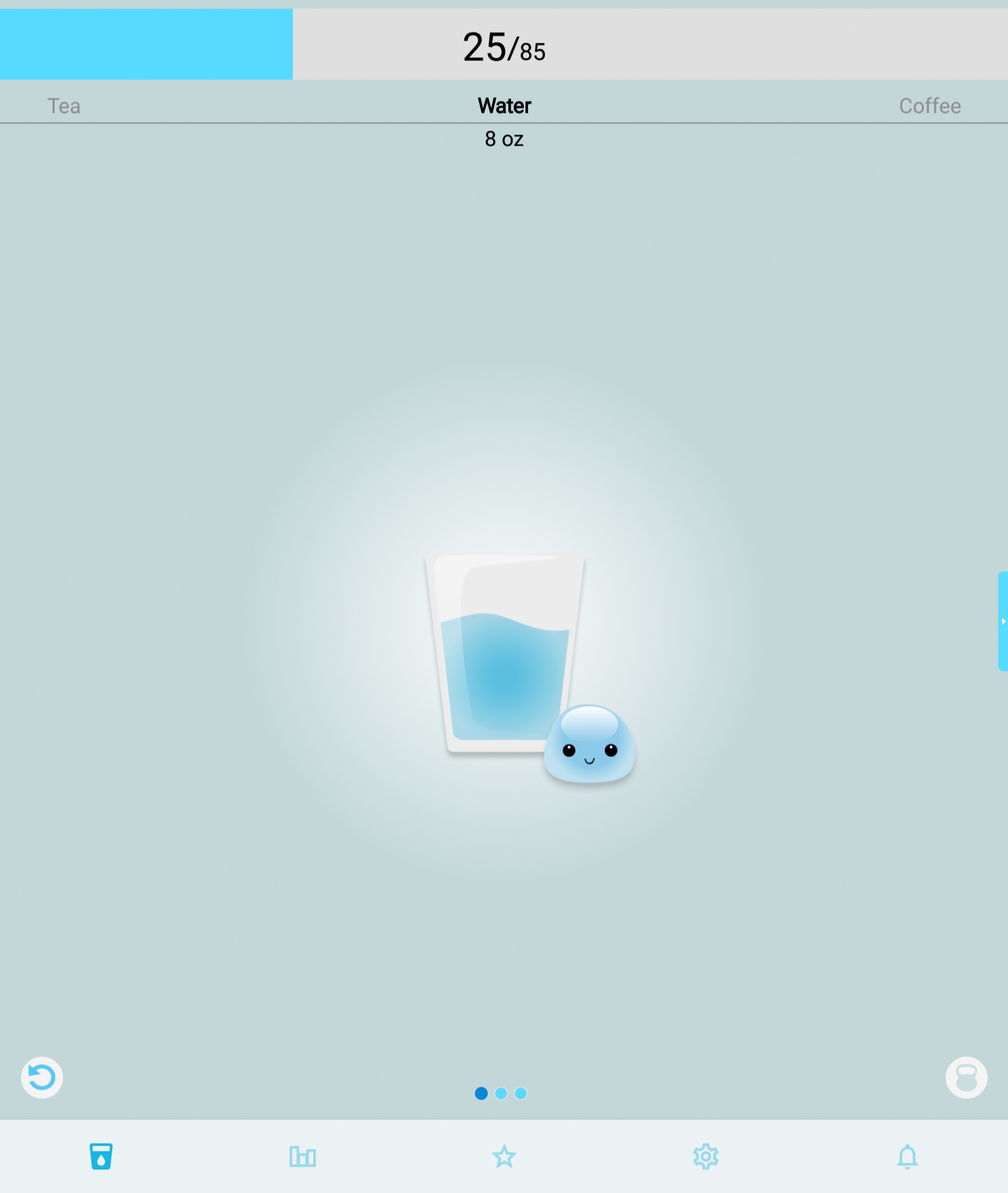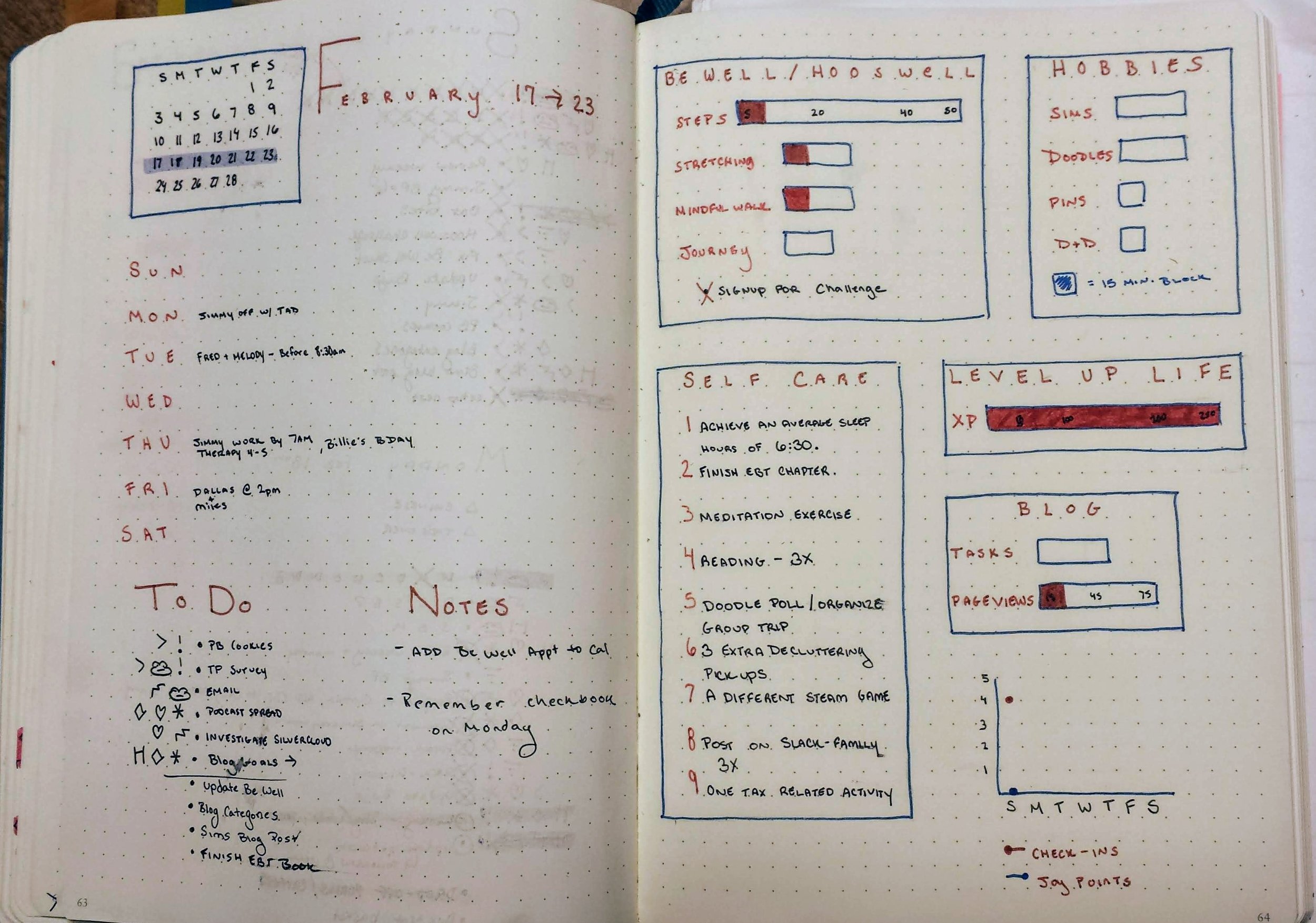Just over a month ago, I wrote a post about the different types of self care where I discuss nine different kinds of self care that are all important for wellness. Having good self care is more than just occasionally taking an evening off to binge your favorite show, or taking a luxurious bath. It is a mindset. It is a collection of small habits that you do on a regular basis to maintain your health and happiness.
My approach to improving myself care is to make small changes, on a weekly basis, to help me form habits that will help me feel healthy, energized, motivated and happy. Of course, I use my bullet journal to keep track of these changes, and to reflect on my progress.
This week, I am focusing on improving my physical self care.
What is Physical Self Care?
To quote my own blog post:
“Physical self care is one of the more obvious categories [of self care]. It is likely when you think of ‘self care’ at least one of the first things you think of will be in this category. This is the care of our physical bodies. This can include things like: exercise, nutrition, hydration, sleep, skin care, beauty, stretching, rest, medical and dental appointments, medicine, and pain management.”
Take a moment to reflect on your own physical self care. Are there any obvious gaps in how well you are presently taking care of your body? Do you need more sleep? More movement? Better nutrition?
For myself, I take a 25 minute walk several times a week and I do a 12 minute stretching/yoga routine three times a week. I also pack my lunch everyday and I eat most of my dinners at home. I try to incorporate lots of fruits and veggies into my daily meals. I frequently floss, and I see the dentist every 6 months. I see my doctor at least annually, if not more often. I try to maintain a somewhat consistent sleep schedule too.
There are definitely many ways I can improve my physical self care routine, but it’s also important to acknowledge the good things I am doing! So…yay for all of the above! I feel like there is room for improvement in all the areas of my physical self care with the exception of perhaps making and keeping routine appointments. However, there is one thing in particular that I’ve been wanting to work on lately.
My New Physical Self Care Habit Goal
As I said before, good self care is a collection of small everyday habits that make you feel better. This week I’ve added one new goal to my to do list- form a better hydration habit!
I do drink water and I typically have water with me. However, I don’t drink as much as I’d like to. Drinking a certain amount of water a day (such as 8 glasses) or trying to drink as much water as you can isn’t useful or healthy despite the common myths surrounding it (https://theness.com/neurologicablog/index.php/how-much-water/). My problem is that I’m not always drinking when I’m thirsty.
I check-in with myself often throughout the day to record my brain state, emotions, etc… as part of my work with EBT. One of the things I record is physical states or body sensations such as hunger, thirst, feeling too hot and anxiety symptoms. I’ve noticed I record “thirsty” quite a bit. I think I need to do a better job of noticing, acknowledging and responding to thirst.
I’m currently testing out an app that tracks water intake, but I might come up with another way of working on this habit. Mainly, I just need to remind myself to drink more often.























“Honestly, this post is for me not you, lovely reader. I’m deeply grateful for you being here, and I want you to continue reading. However, I need to warn you that I’m not really trying to convey anything helpful or beneficial for you in this post. This post is to get me writing in an attempt to gain some momentum. I haven’t written in awhile so I challenged myself to write a post today.”